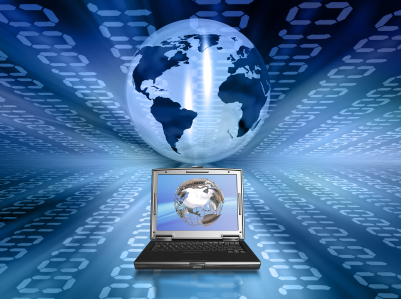Are You in the Path of the Software Monster?

I am on my way home from India and excited about what is going on at our office in Pondicherry, where we have our software development office. Each time I go, it is exciting to see what has manifested from a small 10’ x 15’ room with 2 people back in 2004 to a facility expanding 4000 square feet and about 40 people today! This team is filled with smart, highly analytic minds with a desire to grow, progress, and improve their lives while making a positive impact on their families. I have watched as they have matured, gotten married, had children, and bettered their lives, increasing their standard of living. It is a great feeling to see this evolution and connection we have with the team!
Connectivity is an important word. My increasing exposure to the effects of connectivity has opened my mind to new levels of thinking. In 1999, I created a mutual fund called the iFund. It was the first shareholder-controlled fund, where connectivity drives intelligence making the group smarter than any individual. To make this happen, we utilized software to bring shareholders together to manage the portfolio. From that moment, I knew software would be the driving force connecting a business to it’s customers, financials, inventory, and new markets.
I recently read an exciting article by Marc Andreessen in the Wall Street Journal called “Why Software is Eating the World.” Marc invented the Netscape Browser which changed the landscape of how we connect online. He explains that software is a huge growth opportunity! Companies like HP are transitioning from the PC hardware biz into software for better prospects. He believes the future of the world economies is brighter because of the potential expansion of the software industry.
Marc says, “My own theory is that we are in the middle of a dramatic and broad technological and economic shift in which software companies are poised to take over large swathes of the economy.” He believes the growth we saw over the past decade from about 50 million people to 2 billion people connected will translate to 5 billion connected using smartphones in the next 10 years! Imagine the power of 5 billion people connected . . . real time, all the time!
This makes me wonder about the possibilities for new businesses, including low start-up costs for internet based operations, as well as the potential problems for existing businesses not moving in this direction. His examples include how software has changed music with Apple, books with Amazon, movies with Netflix, direct marketing with Google and Groupon, telecom with Skype, and recruiting with LinkedIn. Organizations in every industry need to be aware of this software revolution!
My partner April Cox and I created Efficience in 2004 to build custom software applications for others and to generate products that are niches to help businesses improve. Sluice and MeetingHabits are two products we have out there, and we look forward to creating even more to meet our core purpose: Discover solutions that make life better for all.
What are you doing to not get eaten by the software world or to benefit from the software world?
